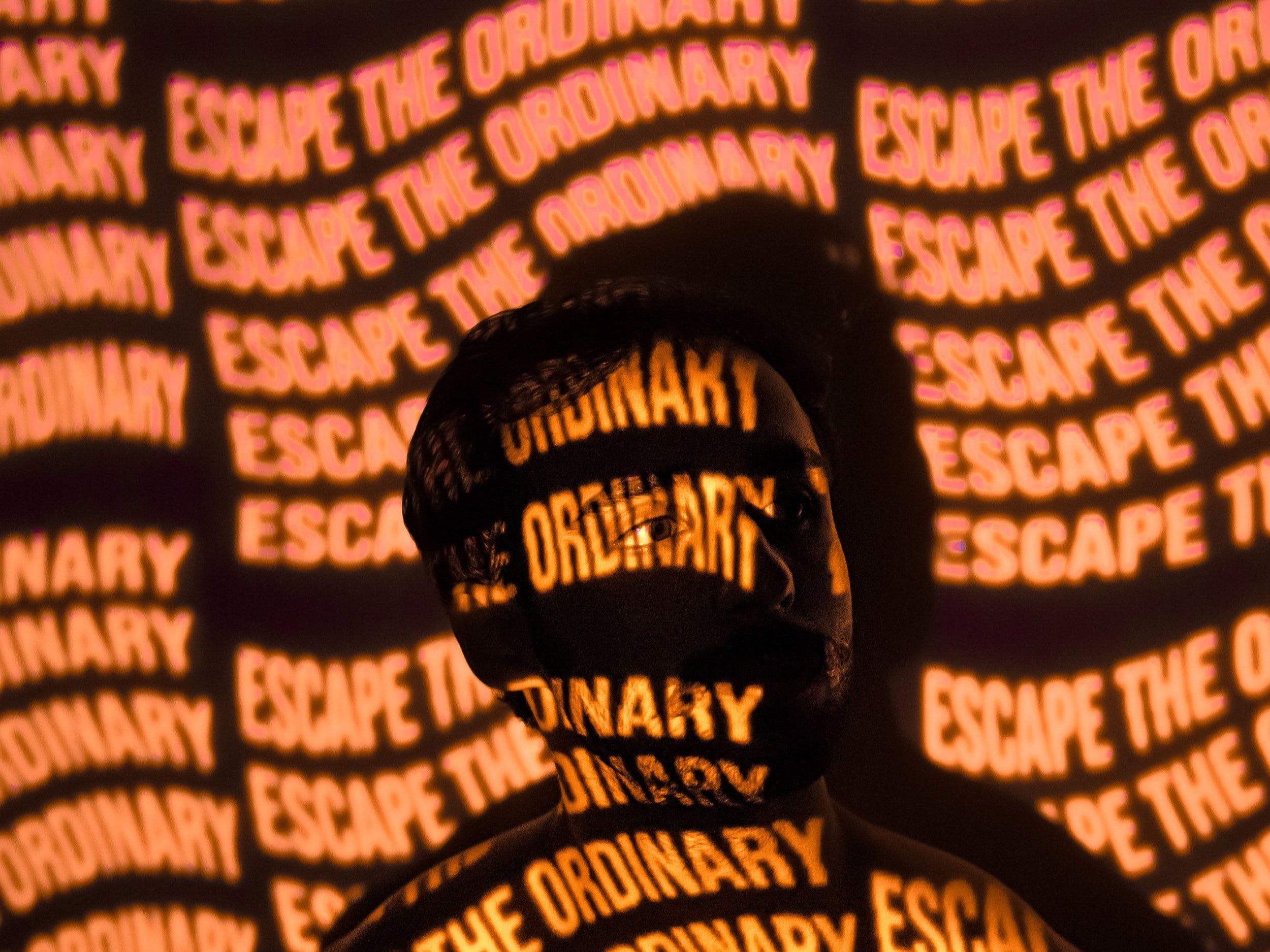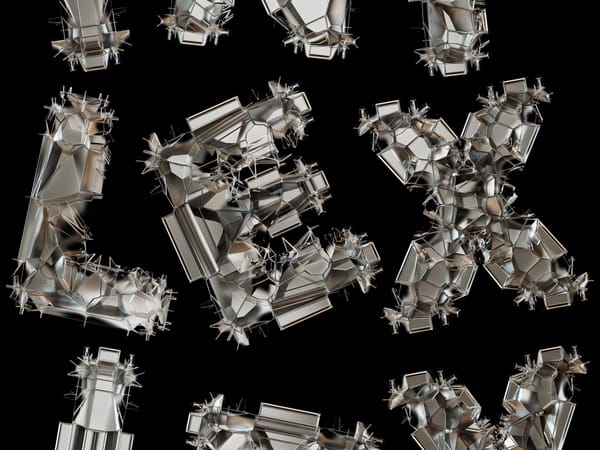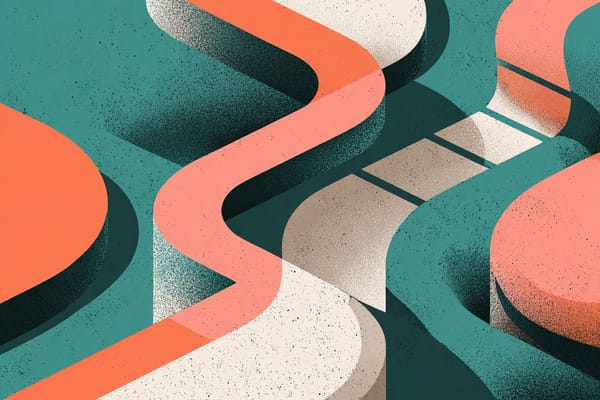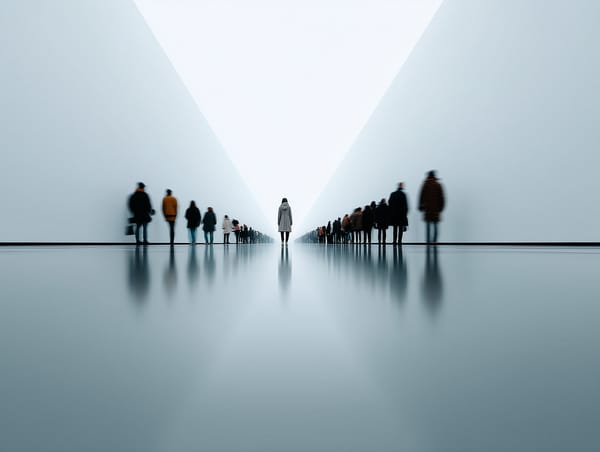Why creativity isn't always a linear process
Do you ever feel like your creativity just isn't flowing the way you want it to?

Do you ever feel like your creativity just isn't flowing the way you want it to?
That maybe you're in a rut or that your ideas are just too formulaic?
If so, don't worry—you're not alone. In fact, most creatives experience this at some point or another. The reason isn't always clear, but it's usually because our creative process isn't linear. We sometimes expect our creativity to work in a specific way, but that's not always how it works.
So why is creativity so hard? And why doesn't it always follow a clear path?
In this blog post, we'll explore some of the reasons why creativity isn't always a linear process—and what you can do about it.
Creativity is often thought of as a linear process, but that's not always the case
There's a popular misconception that creativity is a linear process—you have an idea, you work on it until it's finished, and then you move on to the next idea.
In reality, creativity is anything but linear. It's more like a river: you can start in one place and end up somewhere completely different, sometimes even going back to where you started.
This isn't always easy or comfortable, but it's what makes creativity so fascinating. So don't be discouraged if your creative process doesn't look like anyone else's—as long as you're moving forward, you're doing just fine.
Freelance graphic designers, for example, often have to switch gears when working on different projects.Sometimes they might start with a rough idea and then gradually refine it until it's finished, but other times they might come up with a completely different concept in the middle of the project.
In either case, the final product is usually better than if they had stuck to a single linear process.
There are different types of creativity—some people are more analytical, while others are more intuitive
One of the first things to understand about creativity is that there is no one right way to go about it.
Some people are more analytical in their approach, while others are more intuitive. Neither one is better than the other—they’re just different. And as with anything else, you need to know what works best for you and how to tap into your own personal strengths.
If you’re someone who tends to be analytical, you may find that breaking down a problem into smaller pieces and exploring all of the different possible solutions is the best way for you to come up with creative ideas.
On the other hand, if you’re more intuitive, you may find that it’s helpful for you to simply allow your mind to wander and trust that the right ideas will come to you.
Sometimes you may have a great idea in the shower but can’t seem to replicate it later when you sit down at your desk. Other times, you may start with a rough concept but refine it over time until it’s perfect. The key is to be flexible and to go with the flow.
So if you’re feeling stuck, don’t force it. Instead, take a break, do something completely unrelated to your project, and trust that the answer will come to you when you least expect it.
The best way to be creative is to embrace your own unique style
One of the best ways to be creative is to embrace your own unique style. Freelance graphic designers, in particular, can benefit from cultivating their own personal aesthetic. This can help them to stand out from the competition and create designs that are truly their own.
While it's important to learn the basics of graphic design, don't be afraid to experiment with different styles and techniques. You may find that some approaches work better for you than others, and that's perfectly OK!
As long as your final designs are cohesive and professional, don't be afraid to let your creativity shine.
Everyone has their own individual strengths and weaknesses, and it's important to capitalise on what makes you unique as an artist or designer.
Trying to copy someone else's style won't get you very far—in fact, it's likely to lead to frustration and stagnation. Instead, focus on developing your own voice and style, and let that guide your creative process.
Of course, this doesn't mean that you should ignore all other forms of inspiration. It's always helpful to look at other artists' work for inspiration, but make sure that you're not simply copying someone else's ideas. Instead, take those influences and turn them into something new and original.
The best way to be creative is to find what works for you, and embrace your own unique style. Don't be afraid to experiment and try new things—the more you flex your creative muscles, the better you'll become at producing original artwork and design.

You don't need to be in a certain place or have a specific set of tools to be creative
You don't need to be in a certain place or have a specific set of tools to be creative. In fact, some of the most famous pieces of art were created in complete isolation.
Freelance graphic designers often find themselves working from home, and many times they don't have access to all the fancy tools that their office-based counterparts do.
However, that doesn't mean that they can't be just as creative. In fact, many times the lack of resources can actually spur on creativity, as it forces designers to work with what they have and get resourceful.
So if you're feeling creatively blocked, don't think that you need to go out and buy a bunch of new supplies or find the perfect workspace. Sometimes all you need is to clear your mind and let the ideas flow.
Be open to new ideas and willing to experiment and take risks
Sometimes you need to experiment and take risks in order to find your creative flow.
If you want to be more creative, one of the best things you can do is to keep an open mind. Be open to new ideas, even if they appear ridiculous at first. And don’t be afraid to experiment—sometimes the best way to find a creative solution is to simply try something and see what happens.
Freelance graphic designers need to be especially willing to experiment since they often don't have the luxury of a team of people to help them brainstorm and develop ideas. If you're afraid to take risks, you'll never create anything new or exciting.
Of course, not all experiments will be successful. But that’s okay—the important thing is that you’re constantly pushing yourself to try new things and think outside the box. After all, it’s only through trial and error that we can truly find the most innovative and creative solutions.
So go ahead, and experiment with different mediums, styles, and approaches. You might be surprised at what you come up with.

Get out of your comfort zone
In order to be more creative, you need to be willing to step out of your comfort zone. If you always do things the same way, you’ll never find new and better ways to do them. So take some risks, push yourself beyond your limits, and see what happens.
You may find it helpful to set specific goals for yourself—like trying a new design technique or exploring a new medium. Or you may just want to keep your options open and see where your creativity takes you.
Either way, the important thing is to challenge yourself on a regular basis and to never stop learning.
Be persistent
Creativity isn’t always easy—sometimes it takes time, effort, and a lot of hard work to come up with great ideas. So if you’re feeling stuck, don’t give up. Keep working at it, and eventually, you’ll break through and find the solution you’re looking for.
Of course, there will be times when no matter how hard you try, you just can’t seem to come up with anything good. When this happens, it’s important to take a step back and try to figure out what’s not working.
Maybe you’re approaching the problem from the wrong angle, or you’re just too close to it. Once you identify the issue, you can start making some adjustments and get back on track.
No matter what, always remember that persistence is key. If you keep working at it, eventually you will find the creative solution you’re looking for.
Take breaks and allow yourself to daydream
Contrary to popular belief, daydreaming is actually good for your creativity. When you allow your mind to wander, it gives your brain a chance to relax and explore new and different ideas. So if you’re feeling stuck, take a break and allow yourself to daydream.
Of course, this doesn’t mean that you should spend all day doing nothing. But it is important to give yourself some time to relax and recharge. Maybe you can take a walk, listen to music, or just sit in silence for a few minutes.
Whatever you do, make sure that you’re giving your brain the opportunity to wander and explore.

Let go of your perfectionism and accept that mistakes are part of the creative process
Creativity is often non-linear, messy, and unpredictable. Trying to force it into a specific mould can actually stifle your creativity. Freelance graphic designers, illustrators, and web designers are just a few of the many creative professionals who know this all too well.
One of the biggest challenges we face as creatives is letting go of our perfectionism. We want our work to be perfect, but that's often not possible—or even desirable. The creative process is full of mistakes, and that's okay. In fact, it's often those mistakes that lead to the most innovative and successful ideas.
So how do you let go of your perfectionism and accept that mistakes are a part of the creative process?
Here are a few tips:
- Give yourself permission to experiment
- Don't be afraid of failure
- Be patient—creativity doesn't happen overnight
- Celebrate your successes, even if they're not perfect
Experimentation is a crucial part of the creative process. It's how we push boundaries, challenge ourselves, and come up with new ideas. But it can also be scary because there's always the possibility of failure.
The key is to give yourself permission to experiment. Set aside your fear of failure and allow yourself to explore. You may not always end up where you intended, but that's okay—it's all part of the learning process.
Be patient with yourself as well. Creativity doesn't happen overnight. It often takes time, effort, and perseverance to nurture your ideas and bring them to life.
And finally, celebrate your successes—even if they're not perfect. Every creative accomplishment is worth celebrating, no matter how big or small.
So don't be afraid to make mistakes. Embrace your inner creativity and let it flow. It's the only way to truly achieve greatness.
Have fun and enjoy the process
At the end of the day, remember to have fun and enjoy the creative process. Creativity is a journey, not a destination. Embrace your mistakes, experiment with new ideas, and don't take yourself too seriously. The more you enjoy the process, the more creative you'll be.
So, what have we learned? That creativity is a complex process that doesn't always follow a linear path.
We often think of creativity as something that comes easily and naturally, but the reality is that it takes time and practice to develop our creative skills. And even then, our best ideas may not come to us in the way we expect them to.
The next time you're struggling with a creative project, don't be discouraged—remember that it's normal for the process to be unpredictable. Just keep working at it, and eventually the answers will come.
Are there any specific techniques that have worked well for you when it comes to boosting creativity? Let me know in the comments below!



